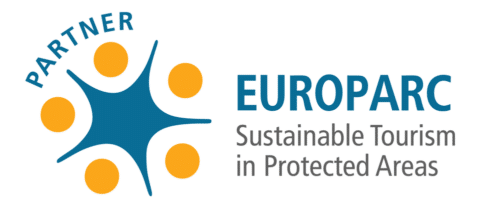Even if the cetaceans are large, it is difficult to study them, because they elude our observation most of the time. Thanks to the organizations dedicated to their research in the Canary Islands.
Since 1993, SECAC (Society for the Study of Cetaceans of the Canary Islands) has been working on studies on the presence, distribution, habitat use, abundance, socio-ecology and conservation status of cetaceans in the Canary Islands.
They have been concentrating on the populations of the bottlenose dolphin (Tursiops truncatus), the pilot whale (Globicephala macrorhyncus), the round-headed dolphin (Grampus griseus), the beaked whale (Fam. Ziphiidae) and the rough-toothed dolphin (Steno bredanensis). For this purpose they used methods such as teledetection, eco-probes, studies of the habitat, recording of the diving profile by means of TDR (see below), photo identification (individual recognition after photographic analysis of shape and scratches or notches in the dorsal fin), analysis of the stomach contents and genetic profile.
SECAC is also involved in projects with international cooperation such as Europhlukes (European database for photo identification of sperm whales in particular) and Macetus, in which comparisons of genetic and behavioural studies and distribution data of four species in 2004 and 2005 were elaborated in collaboration with Madeira and the Azores.
In 2005, SECAC in Lanzarote opened the Cetacean Museum in Lanzarote together with Puerto Calero. www.cetáceos.org. In 2016 the museum was closed.
Staff of the University of La Laguna are working on studies on the distribution and frequency, behavior and diet of beaked whales at El Hierro and bottlenose dolphins and pilot whales at Tenerife. In collaboration with the Oceanographic Institute of Woods Hole they have marked pilot whales in Tenerife and beaked whales at El Hierro with TDR.

The torpedo-like transmitters, attached with suction cups, contain equipment for measuring pressure (and therefore depth), acceleration in three planes and a wide range of wavelengths. This enabled them to measure the frequency of the fin beats (and in one measurement even the heartbeat) and to record the sounds produced and their echo from the ground, group members and prey. For example, it could be determined that with the beaked whales also the young animals dive into big depths, while this is not the case with pilot whales. The transmitter loosens after max. approximately 20 hours and is secured.
In the diagram you can see the diving depths of a pilot whale in the chronological course. The color of the line marks the speed during the dive, the corresponding scale is on the right side. The dashed vertical line marks the sunset. The black rings show when clicks were recorded to locate prey. The results are only partially discussed in the text on page 29 (courtesy of Natacha Aguilar, Universidad de La Laguna, PhD thesis, 2006).
The University of Las Palmas de Gran Canaria is working on studies on causes of death and disease such as parasites, water pollution, collisions, etc., especially when they are related to human activities. For example, the presence of gas bubbles in the tissues of beaked whales stranded off Fuerteventura after the NATO manoeuvres was discovered here (the gas bubbles cause damage to internal organs and sometimes death). These bubbles form either as a direct consequence of the use of strong sonar or through inappropriate diving behaviour of the animals, for example when they are frightened at great depth and stay too long in the water or ascend too fast. In addition, extreme damage to the inner ear of the animals was found.
Canarias Conservación is engaged in studies on the distribution, behaviour, habitat use and conservation status of the different cetacean species. Population sizes are also being determined and data collected on the stranded animals of the province of Santa Cruz de Tenerife. They also provide cetacean skeletons for museums and do educational work in schools. Canariasconservacion.org
M.E.E.R. e. V. is a German association that conducts studies on the distribution and behaviour of cetaceans in La Gomera and is dedicated to the establishment of a protected area off the island. Among other things, the specific boat-related behaviour of the different species and the threats of collisions are studied. For 20 years, data has been continuously recorded here on whale watching boats. In Valle Gran Rey there is an information center about cetaceans in the facilities of “Oceano La Gomera”. At this organization one can participate in behavioral biology internships, which are run from a small fishing boat, which now works as a whale watching boat.
I have mainly mentioned the old-established organizations because I know the people. Further information offers for example Tonina: http://asociaciontonina.com/


